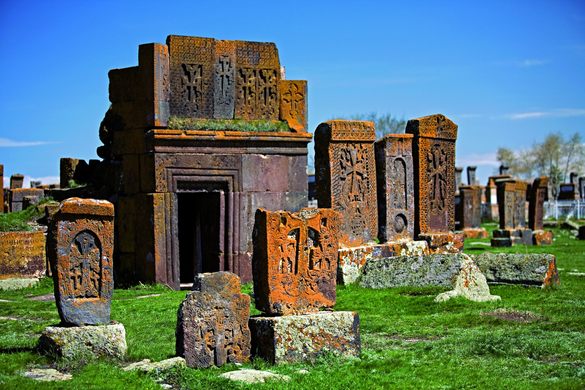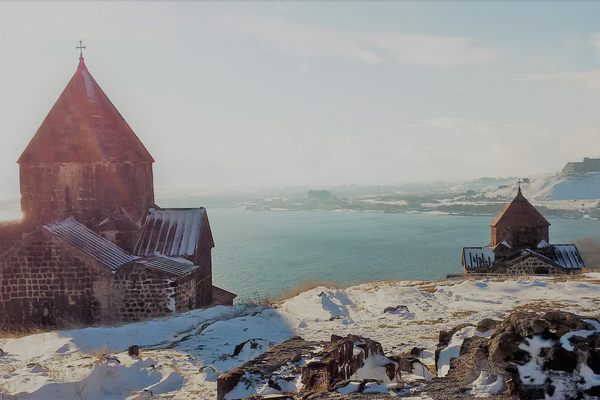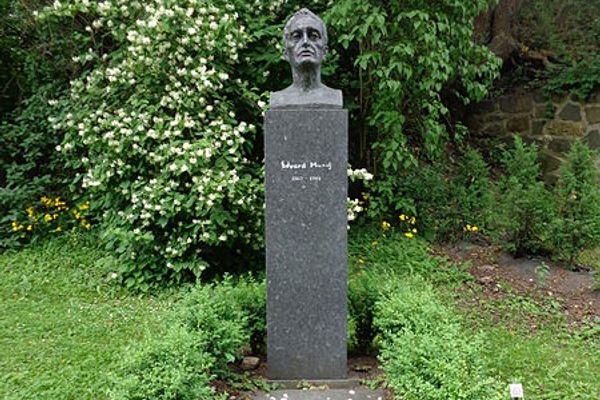Khachkars
Hundreds of intricately carved Armenian stone crosses can be found within this huge cemetery.
The carving of khachkars, literally meaning “cross-stones,” is an ancient Armenian art. It began with a simple cross depicted on a stone, usually a tombstone or memorial, and eventually evolved into very intricate knotwork patterns covering the entire marker.
These beautiful stelae, some over a thousand years old, can be found all over historic Armenia and are a symbol of Armenia’s cultural heritage. The largest collection is at the Noratus Cemetery, near the Alpine Lake Sevan, where they line the hill around two simple old chapels, most of them liberally sprinkled with lichens. (There was at one time a much larger khachkar cemetery located in Old Julfa, but that was sadly destroyed over the years by the Soviet, then Azerbaijani governments.)
While some of the nearly one thousand khachkars at Noratus Cemetery date back as far as the 10th century, the majority were made in the 1500s and 1600s when three master carvers named Kiram Kazmogh, Arakel, and Meliset were hard at work. Aside from the elaborate patterns, the stones at Noratus depict saints, angels, wedding scenes, men riding horses, and scenes from life at the time.
In 1977, the head of the Armenian Church donated one of the khachkars to the British Museum, so you don’t necessarily have to make it all the way to the shores of Lake Sevan to see one of these beauties.
Know Before You Go
The cemetery is located just over a mile from the main road, open 24 hours. Give yourself plenty of time to wander around and admire these wonderful works of art.






















Follow us on Twitter to get the latest on the world's hidden wonders.
Like us on Facebook to get the latest on the world's hidden wonders.
Follow us on Twitter Like us on Facebook